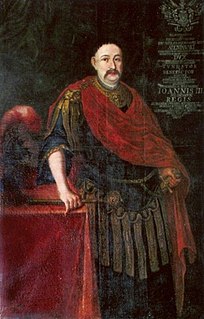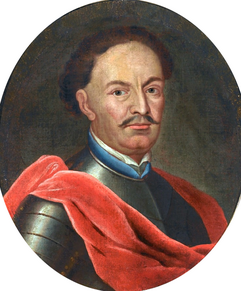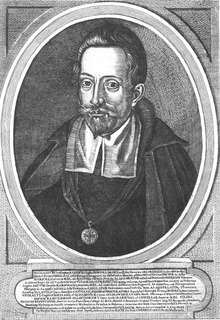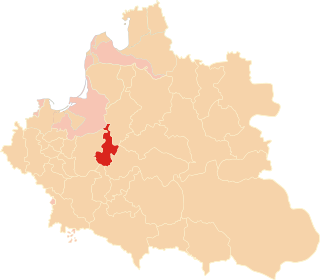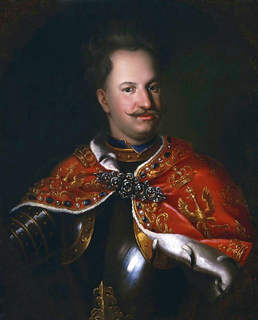| Marek Sobieski | |
|---|---|
 | |
| Coat of arms | Janina |
Full name Marek Sobieski herbu Janina | |
| Born | 1549/1550 |
| Died | 1605 |
| Family | Sobieski |
| Consort | Jadwiga Snopkowska Katarzyna Tęczyńska |
Issue | |
| Father | Jan Sobieski |
| Mother | Katarzyna Gdeszyńska h. Gozdawa |
Marek Sobieski (1549/1550 – 1605) was a Polish–Lithuanian noble (szlachcic).

The Polish–Lithuanian Commonwealth – formally, the Crown of the Kingdom of Poland and the Grand Duchy of Lithuania and, after 1791, the Commonwealth of Poland – was a dual state, a bi-confederation of Poland and Lithuania ruled by a common monarch, who was both King of Poland and Grand Duke of Lithuania. It was one of the largest and most populous countries of 16th– to 17th-century Europe. At its largest territorial extent, in the early 17th century, the Commonwealth covered almost 400,000 square miles (1,000,000 km2) and sustained a multi-ethnic population of 11 million.
He was a courtier from 1577, a Royal Court Chorąży (chorąży nadworny królewski) from 1581, a castellan of Lublin from 1597, and a voivode of Lublin Voivodeship from c. 1597/98.
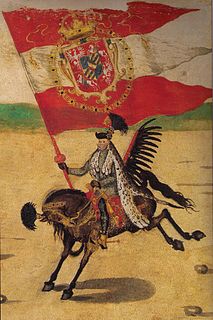
Chorąży or khorunzhyi (Polish pronunciation: [xɔˈrɔ̃ʐɨ]; means "Standard bearer"; Russian and Ukrainian: Хорунжий is a military rank in Poland, Ukraine and some neighboring countries. A chorąży was once a knight who bore an ensign — the emblem of an armed troop, a province, a land, a duchy, or the kingdom. This function later evolved into a non-hereditary noble title.
A castellan is the title used in Medieval Europe for an appointed official, a governor of a castle and its surrounding territory referred to as the castellany. The title of governor is retained in the English Prison system, as a remnant of the medieval idea of the castellan as head of the local prison. The word stems from the Latin Castellanus, derived from castellum "castle". Sometimes also known as a constable of the castle district, the Constable of the Tower of London is, in fact, a form of castellan, with representative powers in the local or national assembly. A castellan was almost always male, but could occasionally be female, as when, in 1194, Beatrice inherited her father's castellany of Bourbourg upon the death of her brother, Roger.

Lublin is the ninth largest city in Poland and the second largest city of Lesser Poland. It is the capital and the center of Lublin Voivodeship (province) with a population of 349,103. Lublin is the largest Polish city east of the Vistula River and is approximately 170 kilometres to the southeast of Warsaw by road.
He was the grandfather of Jan III Sobieski, the elected King of the Polish–Lithuanian Commonwealth.


